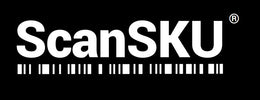
eCommerce Logistics: Warehouse Slotting and Space Utilization
Undertaking Warehouse Slotting in an eCommerce focused warehouse.
Determining the locations of your SKUs in your warehouse (known as slotting) used to be an easy concept. In the new world of warehousing focusing exclusively to a large degree on eCommerce sales, this is no longer so simple. eCommerce sales in the US grew to over $348.9 billion last year and it is not expected to slow down. As a result, today’s method of slotting your warehouse needs to grow and adapt as well.
The old method
Slotting had the potential to become complex depending on your SKU type, although generally you would identify your top selling SKUs and rank right down to your slowest moving. The second main step was to plot out your warehouse and determining the size of each storage location and distance to your dispatch area. Using this information, you would then slot your fastest moving items in the closest location to where your pickers started their picks from, second fasted item in next closed location and so on.
Challenges in Slotting in an eCommerce environment
The old method has now becoming more difficult for a number reasons such as
- SKU ranges in eCommerce change more frequently to capitalize on the ability for eCommerce businesses to be flexible with their sales offering. This results in changes in what the ‘fast moving’ items are as they may change frequently.
- Drop shipping is more common, therefore eCommerce business may stock some items themselves, and some items distribute through a 3rd party
- There are a large number of small orders, compared to a small number of large orders. Therefore, demand and stock levels are changing more frequently. This also often means a larger number of warehouse locations with smaller amounts of stock in each. Potentially even multi SKUs per location.
- Add on services such as gift wrapping and kitting are more common with eCommerce. This may impact your warehouse layout where you need space to undertake these activities.
Slotting in eCommerce Tips
Now that we understand the challenge what is the solution? The main underlying factor here is data.
Issue:
Frequently changing SKUs and many orders with small order sizes
Solution:
Data accuracy is critical. You can no longer just slot every 6 months using the previous 6 months were of data. You don’t need to invest in a slotting tool either. Set up spreadsheets, tracking demand for your products on a weekly basis. Most cloud inventory management systems will be able to pull this data quite easily. Compare this weekly demand tracker to the locations they’re currently stored in with a ‘distance to dispatch’ field. You don’t also need to re-slot products weekly, but keep on eye on this report and if it’s clear a product is no longer a top seller, yet sits in the prime warehouse location, it will be worth considering moving it. This is best done when stock levels for that product are low, right before replenishment.
The second challenge to overcome is new SKUs being added to your range more frequently. You will not always know the demand of the new SKUs which makes this tricky. Best practice is to base the demand on comparable products your stock. Then slot the SKU is a location based on that demand. Monitor it closely over the first 2 months and don’t be afraid to re-locate the SKU is it no longer makes sense to have it in that location. Tracking demand weekly will help with this.
Issue:
Add on services such as gift wrapping and kitting (packing different products together, to be sold as one)
Solution:
This requires a re-think on there your ‘prime’ locations are. If certain products are often sold as a ‘kit’ then it would make more sense to locate these close to your work area where kits are assembled. This may not necessarily be in your dispatch area. The result is you may have multiple ‘prime’ locations depending on the SKU. Again, this can be captured and identified in spreadsheet easily.
Anthony Thai is the Operations Manager for ScanSKU. ScanSKU develops and manufactures held-held Android Based Barcode Hardware Solutions. ScanSKU partners with app and software developers in Inventory, POS, Asset Management and Mobile Invoicing Industries, to ensure the customer can begin using the solution right out of the box.









